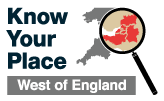New Tools from Old Maps: digitising Ordnance Survey mapping
by Dr. Philip Hatfield, Lead Curator, Digital Maps, British Library
The British Library (http://www.bl.uk) is in a process of change. After centuries of collecting material in printed form the Library now looks to acquire and store for the long term increasing amounts of content in digital formats. Why is this? Well, for maps most content is now only produced digitally and so it’s important we be able to provide this to our users. But, as one reader asked me recently, why does the Library need to invest in the expensive infrastructure required to store digital maps for the long term? When that question comes up I point to projects such as Know Your Place.
When the Library’s print Ordnance Survey maps were collected during the nineteenth and twentieth centuries the case for use and storage would have been clear; making maps available to an interested public and storing them in the long term to make sure the knowledge they represent endures for future generations to use. But some of that future use is unexpected. How many nineteenth century curators thought, for instance, that in the twenty-first century the British Library’s Ordnance Survey mapping collection could be used as part of a project to crowd-source historical information using digitised historic maps on a portal which can be accessed from most of the world? Collecting for the future, then, is extremely important, precisely because we do not know what the future has in store for what we collect today.
In short, the British Library is pleased to partner with the Know Your Place project, providing access to our historic collections for innovative use. This means the Library digitising large numbers of map sheets (various editions of the OS 25 inch survey, Town Plans, Grid Maps and some non-OS material, Goad Fire Insurance Plans of Bath, Bristol and Gloucester) before georeferencing the sheets and binding them together to make a seamless, vectorised map. Our contribution to the project sounds deceptively simple, digitising our historic collections in order to make available comprehensive historic layers of mapping for volunteers to use in their research and data pinning activities. However, anyone who has ever worked on such a digitisation project will know things are never quite so simple and so it seems worth dwelling on some of the challenges and successes here.
The problems involved are many; there are conservation issues, copyright queries, equipment snags, problems with holdings and a number of other issues which all need addressing before the material becomes available to users. On top of this there are also the smaller snags familiar to anyone who works with digital items (such as photographs) on a regular basis, such as finding a big enough external hard drive to ship everything around on. Thankfully we’re getting there, especially thanks to help from our partner National Library of Scotland (http://maps.nls.uk).
Sign up to our project newsletter to follow progress as more of the West of England is mapped onto Know Your Place through 2016.

